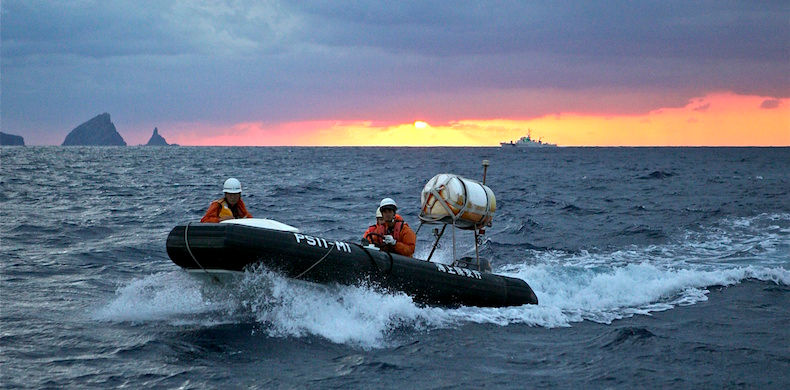The Other Asian Maritime Flashpoint – the Senkaku/Diaoyu Islands
- Feb 16, 2016
- 4 min read

As tensions continue to simmer in the South China Sea (SCS), it is easy to forget the region’s other hotspot – a group of uninhabited islands known as Senkaku/Diaoyu at the centre of an ownership dispute between Japan and China. Avoidance of the issue, the result of mutual recognition of its potential to disrupt economic ties, has become somewhat de rigueur in Sino-Japanese relations. Yet despite the instrumentality of this approach in allowing bilateral relations to flourish (two-way trade now exceeds US $300 billion per annum), increased sabre-rattling following several escalatory events has the potential to significantly destabilise the security situation in the East China Sea (ECS) if not managed carefully.
Notwithstanding their insignificance as territorial features, the Senkaku/Diaoyu islands’ value to their sovereign claimants is twofold: subterranean in the form of natural resources, and strategic in relation to their positioning along maritime trade routes and potential leveraging as an inter-state buffer. However, the weight placed on resource and strategic imperatives differs by state; the commissioning of new gas platforms in 2015 evinces China’s focus on the former, while Japan, the de facto administrator of the islands, is more concerned with the islands’ strategic and political importance in the context of growing Chinese influence in the region.
Recently, the stakes have been raised by a series of figurative ripples in the waters of the ECS – specifically, a spate of incursions by Chinese vessels. While such incursions are not a new phenomenon, these events differentiate themselves from precedents with respect to the frequency of incursions into territorial waters, and more consequentially China’s decision to deploy an armed coast guard vessel. Japan responded to the ship’s appearance by launching a formal protest to Beijing, while President Abe upped the ante by vocalising Japanese perceptions of China’s claim to the islands as a mere resources grab.
The question is, what has provoked China into deploying hard power assets? Japan’s nationalisation of several islands in 2012, although infuriating the Chinese Communist Party (CCP) and igniting anti-Japanese sentiment, did not immediately nor subsequently beget a Chinese show of force. Rather, two current trends provide explanatory power for China’s sudden militaristic assertiveness over the islands. One is the controversy over Japanese military aggrandisement, beginning with the revision of its interpretation of constitution Article 9 enabling the provision of defence assistance to treaty allies, and culminating in the approval of the country’s largest defence budget with a focus on building capabilities in the southern island chain including Okinawa and strengthening the monitoring of outlying territories.
The other trend relates to China’s infrastructure projects in the SCS. Ni Lexiong, naval expert at Shanghai University of Political Science and Law, has suggested that China’s incursions near Senkaku/Diaoyu are tactical; aimed at increasing pressure on Japan thus diverting international attention from its operations in the SCS while deterring Japanese involvement in the region.
Meanwhile, Michael Green of the CSIS argues that the dispute is a microcosm of a broader power struggle between China and Japan. But in the age of the Pivot to Asia, US influence in the region is ubiquitous. Such influence is embodied in the US-Japan bilateral security treaty, a mechanism which invokes US involvement in the event of a Chinese land grab. China, well aware of this treaty, has been vigorously enhancing its blue water capabilities and relocating naval assets to coastline areas proximate to the islands.
Rising tensions in the ECS go against the grain of what was a successful year in bilateral rapprochement. With a return to the days of the ‘agree to disagree’ approach unfeasible, it is crucial that both sides build on the trend of bilateral progress in forging a mutually acceptable arrangement or at the very least an effective mechanism to prevent escalation.
Some pundits have advocated the suitability of International Court of Justice (ICJ) adjudication. However, submission to the ICJ ignores the most important obstruction to resolution – Tokyo’s official position which refuses to recognise the existence of a dispute. Acquiescing to ICJ adjudication would be tantamount to recognising an alternate claim and would be a monumental show of political weakness.
In the meantime, dispute management for the sake of regional security is the most feasible option. In November 2014 Presidents Abe and Xi agreed to implement a crisis management mechanism in the ECS, followed by a reiteration in January 2015 committing to anti-escalatory measures (a direct diplomatic hotline). However, dispute management remains in its inchoate stages largely due to Beijing’s hesitancy.
The Senkaku/Diaoyu dispute is a complex geopolitical dilemma which reflects the broader regional security situation of growing Chinese assertiveness and its effect on Japan’s foreign and military policies. Although both sides have agreed on cursory measures to mitigate potential escalation, China continues to push ahead with resource extraction activities and the tactical repositioning of military assets, while Japan seeks to strengthen strategic capabilities near the islands to ward off a potential land grab.
Michael Parker is the East Asia Fellow at Young Australians in International Affairs.
This article can be republished with attribution under a Creative Commons Licence. Please email publications@youngausint.org.au for more information.
Image Credit: KOKUYO, Wikimedia Commons



Comments